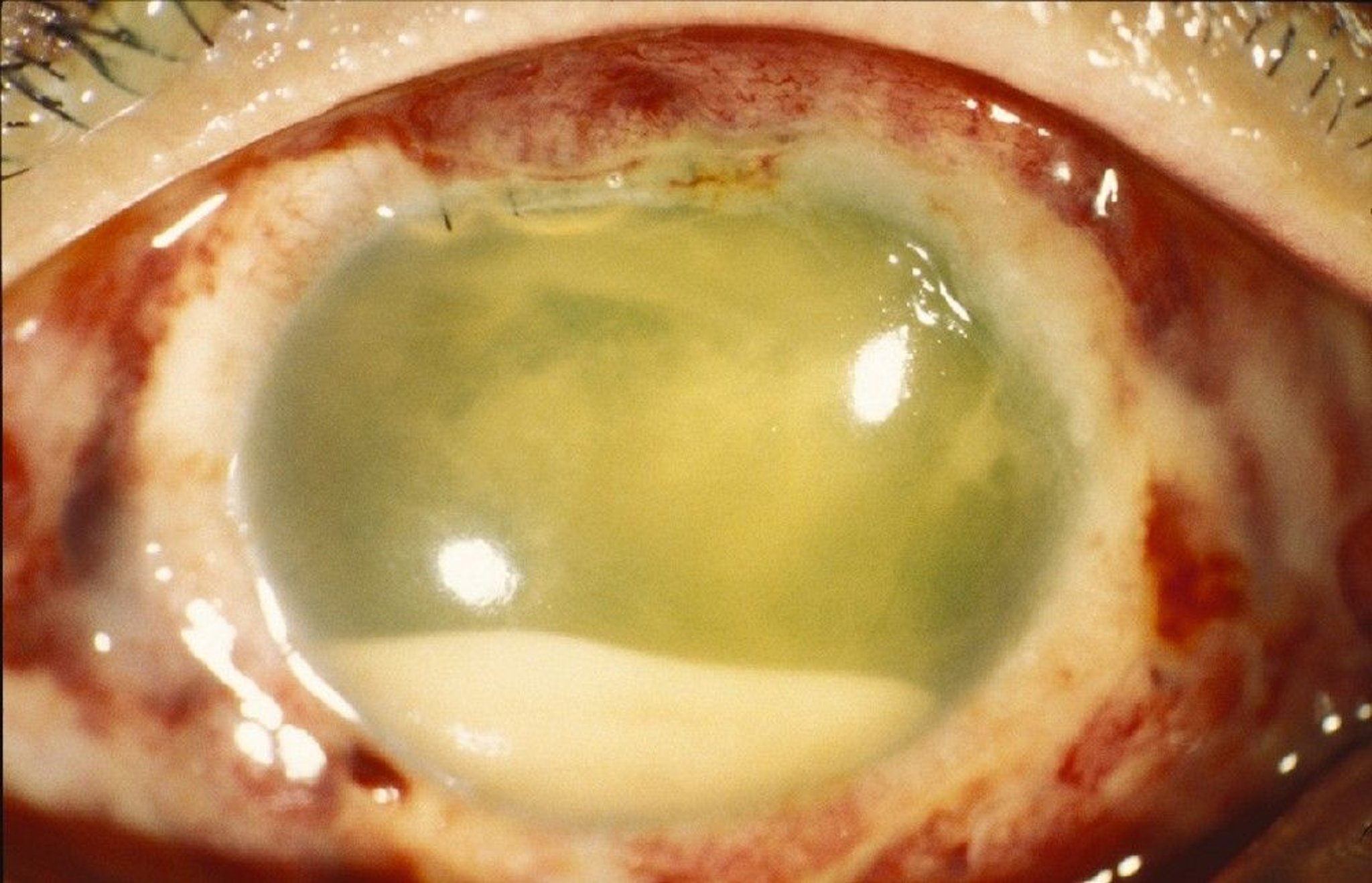Endophthalmitis is an acute panuveitis resulting most often from bacterial infection.
Topic Resources
Most cases of bacterial endophthalmitis are caused by gram-positive bacteria, such as Staphylococcus epidermidis or S. aureus (1). Endophthalmitis caused by gram-negative organisms tends to be more virulent and has a worse prognosis. Fungal and protozoan causes of endophthalmitis are rare. Most cases occur after intraocular surgery (exogenous) or penetrating ocular trauma (2). Less commonly, infection reaches the eye via the bloodstream after systemic surgery or dental procedures or when IV lines or IV medications are used (endogenous). (See also Overview of Uveitis.)
© Springer Science+Business Media
Endophthalmitis is a medical emergency because vision prognosis is directly related to the time from onset to treatment. Rarely, untreated intraocular infections extend beyond the confines of the eye to involve the orbit and CNS.
Endophthalmitis typically causes severe ocular ache and decreased vision. Signs include
Intense conjunctival hyperemia and intraocular inflammation within the anterior chamber and vitreous
Loss of the red reflex
Eyelid edema (occasionally)
References
1. Schiedler V, Scott IU, Flynn HW Jr, et al: Culture-proven endogenous endophthalmitis: Clinical features and visual acuity outcomes. Am J Ophthalmol 137(4):725–731, 2004. https://doi.org/10.1016/j.ajo.2003.11.013
2. Keynan Y, Finkelman Y, Lagacé-Wiens P: The microbiology of endophthalmitis: Global trends and a local perspective. Eur J Clin Microbiol Infect Dis 31(11):2879-2886, 2012. doi: 10.1007/s10096-012-1659-x
Diagnosis of Endophthalmitis
Clinical evaluation
Microbiologic testing (eg, gram stain and culture of aspirates for endogenous endophthalmitis, blood and urine cultures)
Diagnosis requires a high index of suspicion in at-risk patients, especially those with recent eye surgery or trauma. Gram stain and culture of aspirates from the anterior chamber and vitreous are standard. Patients with suspected endogenous endophthalmitis should also have blood and urine cultures.
Treatment of Endophthalmitis
Intravitreal antibiotics
For endogenous endophthalmitis, intravitreal and IV antimicrobials
In severe cases, possible vitrectomy and intraocular corticosteroids
Initial treatment includes broad-spectrum intravitreal antibiotics, most commonly vancomycin and ceftazidime. Patients with endogenous endophthalmitis should receive both intravitreal and IV antimicrobials. Therapy is modified based on culture and sensitivity results.Initial treatment includes broad-spectrum intravitreal antibiotics, most commonly vancomycin and ceftazidime. Patients with endogenous endophthalmitis should receive both intravitreal and IV antimicrobials. Therapy is modified based on culture and sensitivity results.
Vision prognosis is often poor, even with early and appropriate treatment. Patients whose vision at presentation is count-fingers or worse should be considered for vitrectomy and use of intraocular and possibly systemic corticosteroids (1). Corticosteroids are, however, contraindicated in fungal endophthalmitis.
Treatment reference
1. Morris RE, Kuhn F: Complete and early vitrectomy for endophthalmitis. Eur J Ophthalmol 31(6):2794-2795, 2021. doi: 10.1177/11206721211021185


